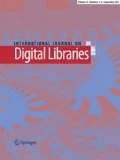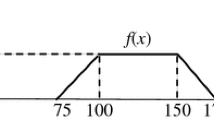Abstract
This paper presents a case study of data management and processing of archaeological information through a relational database. The unusual typology of the ‘small finds’ that were archaeologically analyzed and the specific history of the excavations at Phaistos and Ayia Triada (Crete, Greece) prompted our consideration of issues regarding data integrity. We sought to address the problem surrounding the relevance of archaeological sources by applying a reliability index to the subjective interpretations of archaeological data, which ultimately led to the implementation of a fuzzy method to determine the degree of uncertainty of attributions associated with function. The resulting database represents a ‘container of memories’ that allows the processing of all the typological and functional attributions from any source, without having to necessarily simplify or dilute the information in order to render it manageable. The concept of ‘probability of belonging’ and multi-assignment of source attributions seem to represent plausible methodological pathways to determining the reliability of archaeological data, thus warranting the research presented herein.


Similar content being viewed by others
Notes
The Professor Vincenzo La Rosa was the director of the Italian Mission at Phaistos from 1977 to 2014.
References
Bechhofer, S., De Roure, D., Gamble, M., Goble, C., Buchan, I.: Research objects: towards exchange and reuse of digital knowledge. In: The Future of the Web for Collaborative Science (FWCS 2010), Workshop at WWW2010 (Raleigh, NC, USA, 26 April 2010). Nature Precedings (2010). https://doi.org/10.1038/npre.2010.4626.1
Bornmann, L., Hans-Dieter, D.: Selection of research fellowship recipients by committee peer review. reliability, fairness and predictive validity of Board of Trustees’ decisions. Scientometrics 63(2), 297–320 (2005). https://doi.org/10.1007/s11192-005-0214-2
Caraher, W.: Slow archaeology: technology, efficiency, and archaeological work. In: Averett, E.W., Gordon, J.M., Counts, D.B. (eds.) Mobilizing the Past for a Digital Future: The Potential of Digital Archaeology, pp. 421–441. The Digital Press at the University of North Dakota, North Dakota (2016)
Crescioli, M., D’Andrea, A., Niccolucci, F.: A GIS-based analysis of the Etruscan cemetery of Pontecagnano using fuzzy logic. In: Lock, G.R. (ed.) Beyond the Map: Archaeology and Spatial Technologies, pp. 157–179. IOS Press, Amsterdam (2000)
Crescioli, M., D’Andrea, A., Niccolucci, F.: Archaeological applications of fuzzy databases. In: Burenhult, G., Arvidsson, J. (eds.) Archaeological Informatics: Pushing the Envelope. CAA2001. Computer Applications and Quantitative Methods in Archaeology. Proceedings of the 29th Conference (Gotland, April 2001). BAR International Series 1016, pp. 107–116. Archaeopress, Oxford (2002)
Dierckx, H.M.C.: Aspects of Minoan technology, culture and economy: the Bronze Age stone industry of Crete. Ph.D. Thesis, University of Pennsylvania (1992)
Figuera, M.: Complessità e flessibilità del dato archeologico: database management e metodo Fuzzy. In: Figuera, M., Żebrowska, K. (eds.) International Course in Archaeology ‘Papers in Mediterranean Archaeology’, Syndesmoi 5, Quaderni del Corso di Laurea in Archeologia, opzione internazionale, pp. 199–213. Università degli Studi di Catania, Catania-Warsaw (2016)
Figuera, M.: Un modello relazionale quale strumento per una migliore comprensione del Patrimonio Culturale. Il caso studio degli small finds da Festòs e Haghia Triada. Ph.D. Thesis, University of Catania (2017)
Figuera, M.: Small finds analysis: typology and function. A case study from phaistos. In: Żebrowska, K., Ulanowska, A., Lewartowski, K. (eds.) Sympozjum Egejskie. Papers in Aegean Archaoelogy. Institute of Archaeology, vol. 1, pp. 27–38. University of Warsaw, Warsaw (2017)
Figuera, M.: Database management e dati archeologici: standardizzazione e applicazione della logica fuzzy alla gestione delle fonti e delle attribuzioni tipologiche. Archeologia e Calcolatori 29, 143–160 (2018)
Fronza, V.: Principi di database management in Archeologia: l’esperienza senese. In: Fiorillo, R., Peduto, P. (eds.) Atti del III Congresso Nazionale di Archeologia Medievale (Castello di Salerno, Complesso di Santa Sofia, Salerno, 2–5 ottobre 2003), pp. 629–632. All’Insegna del Giglio, Firenze (2003)
Gillis, C.: Minoan everyday objects as sources of historical information. In: French, E., Wardle, K.A. (eds.) Problems in Greek Prehistory, Papers Presented at the Centenary Conference of the British School of Archaeology at Athens (Manchester, April 1986), pp. 417–420. Bristol Classical Press, Bristol (1988)
Gitelman, L., Jackson, V.: Introduction. In: Gitelman, L. (ed.) “Raw Data” is an Oxymoron, pp. 1–14. MIT Press, Cambridge (2013)
Gordon, J.M., Averett, E.W., Counts, D.B.: Mobile computing in archaeology: exploring and interpreting current practices. In: Averett, E.W., Gordon, J.M., Counts, D.B. (eds.) Mobilizing the Past for a Digital Future: The Potential of Digital Archaeology, pp. 1–28. The Digital Press at the University of North Dakota, North Dakota (2016)
Hermon, S., Niccolucci, F.: Estimating subjectivity of typologists and typological classification with fuzzy logic. Archeologia e Calcolatori 13, 217–232 (2002)
Hermon, S., Niccolucci, F.: La logica fuzzy e le sue applicazioni alla ricerca archeologica. Archeologia e Calcolatori 14, 97–110 (2003)
La Rosa, V.: Per i cento anni dello scavo di Festòs. Creta Antica 1, 13–41 (2000)
La Rosa, V.: «Il colle sul quale sorge la chiesa ad ovest è tutto seminato di cocci… » . Vicende e temi di uno scavo di lungo corso. Creta Antica 4, 11–67 (2003)
La Rosa, V.: Ξανασκάβοντας το σκαμμένο˙ επιστημονική συνείδηση ή ασυνείδησία; Η εμπειρία της Αγίας Τριάδας (Κρήτη). In: Vulgari, E. (ed.) The Prehistoric Research in Greece and Its Perspectives. Theoretical and Methodological Considerations, Proceeding International Symposium in the Memory of D. R. Theocharis (Thessaloniki-Kastoria, 26–28 November 1998), pp. 165–169. University Studio Press, Θεσσαλονίκη (2003)
Li, Q., Li, Y., Gao, J., Zhao, B., Fan, W., Han, J.: Resolving conflicts in heterogeneous data by truth discovery and source reliability estimation. SIGMOD Conference. et al (2014) Resolving conflicts in heterogeneous data by truth discovery and source reliability estimation. In: SIGMOD ‘17 Proceedings of the 2017 ACM International Conference on Management of Data (Chicago, Illinois, USA, May 14–19, 2017), pp. 1187–1198 (2014). https://doi.org/10.1145/2588555.2610509
Lucas, G.: Critical Approaches to Fieldwork. Contemporary and Historical Archaeological Practice. Routledge, New York-London (2001)
MacDonald, E.: Introduction to small finds, big implications: the cultural meaning of the littlest artifacts. Int. J. Hist. Archaeol. 20(4), 641–644 (2016). https://doi.org/10.1007/s10761-016-0372-3
Mancinelli, M.L.: Nota introduttiva alle normative per la catalogazione dei beni archeologici. Istituto Centrale per il Catalogo e la Documentazione, Servizio Beni Archeologici, MiBACT, Roma (2015)
Martone, M. (ed.): Data Citation Synthesis Group: Joint Declaration of Data Citation Principles. FORCE11, San Diego (2014). https://doi.org/10.25490/a97f-egyk
Martone, M.E.: FORCE11: building the future for research communications and e-scholarship. Bioscience 65(7), 635 (2015). https://doi.org/10.1093/biosci/biv095
MiBACT: Scheda RA, Reperti Archeologici, Thesaurus per la definizione del bene, versione 03, aggiornamento 2014. Strumenti terminologici. Istituto Centrale per il Catalogo e la Documentazione, Ministero dei Beni e delle Attività Culturali e del Turismo, Roma (2014)
MiBACT: Scheda RA, Reperti Archeologici, Vocabolario aperto per la compilazione del campo CLS, Categoria, classe e produzione, aggiornamento 2014. Strumenti terminologici. Istituto Centrale per il Catalogo e la Documentazione, Ministero dei Beni e delle Attività Culturali e del Turismo, Roma (2014)
MiBACT: Normative per la catalogazione, Versione 3.00 e 3.01, Struttura dei dati: indicazioni di carattere generale. Istituto Centrale per il Catalogo e la Documentazione, Roma (2015)
Niccolucci, F., D’Andrea, A., Crescioli, M.: Archaeological applications of fuzzy databases. In: Stančič, Z., Veljanovsky, T. (eds.) Computing Archaeology for Understanding the Past. CAA 2000. Computer Applications and Quantitative Methods in Archaeology. Proceedings of the 28th Conference (Ljubljana, April 2000). BAR International Series 931, pp. 107–116. Archaeopress, Oxford (2001)
Niccolucci, F., Hermon, S.: Expressing reliability with CIDOC CRM. Int. J. Digit. Libr. 18, 281–287 (2017). https://doi.org/10.1007/s00799-016-0195-1
Noble, D.F.: Assessing the reliability of open source information. In: Proceedings of 7th International Conference on Information Fusion (Stockholm, Sweden, June 28 to July 1, 2004), pp. 1172–1178 (2004)
Rekatsinas, T., Joglekar, M., Garcia-Molina, H., Parameswaran, A., Ré, C.: SLiMFast: Guaranteed results for data fusion and source reliability. In: SIGMOD ‘17 Proceedings of the 2017 ACM International Conference on Management of Data (Chicago, Illinois, USA, May 14–19, 2017), pp. 1399–1414 (2017). https://doi.org/10.1145/3035918.3035951
Soles, J.S., Davaras, C.: Mochlos IC: Period III Neopalatial Settlement on the Coast: The Artisans’ Quarter and the Farmhouse at Chalinomouri The Small Finds Prehistory Monographs 9. INSTAP Academic Press, Philadelphia (2004)
Steel, L.: Materiality and Consumption in the Bronze Age Mediterranean. Routledge Studies in Archaeology 7. Routledge, New York-London (2013)
Wilkinson, M.D., et al.: The FAIR guiding principles for scientific data management and stewardship. Scientific Data 3, 160018 (2016). https://doi.org/10.1038/sdata.2016.18
Acknowledgements
This work is part of a wider project related to the documentation of small finds carried out under the supervision of the Prof. Pietro Militello (University of Catania, director of the Italian Archaeological Mission in Phaistos, Crete). The project Phaistos and Ayia Triada: Small finds and Contextual Analysis was funded by the Institute of Aegean Prehistory (INSTAP), the University of Catania and the Italian Ministry of Foreign Affairs. I would like to thank Prof. Franco Niccolucci (University of Florence) for inviting me to contribute this case study to the special ‘Archaeological data-based research: are FAIR data fair enough?’ session in the 26th annual CIDOC-ICOM Conference (October 2018, Heraklion, Crete, Greece).
Author information
Authors and Affiliations
Corresponding author
Additional information
Publisher's Note
Springer Nature remains neutral with regard to jurisdictional claims in published maps and institutional affiliations.
Rights and permissions
About this article
Cite this article
Figuera, M. A fuzzy approach to evaluate the attributions reliability in the archaeological sources. Int J Digit Libr 22, 289–296 (2021). https://doi.org/10.1007/s00799-020-00284-6
Received:
Revised:
Accepted:
Published:
Issue Date:
DOI: https://doi.org/10.1007/s00799-020-00284-6




